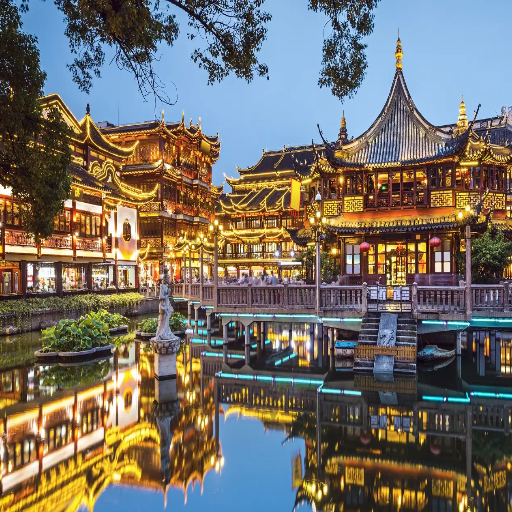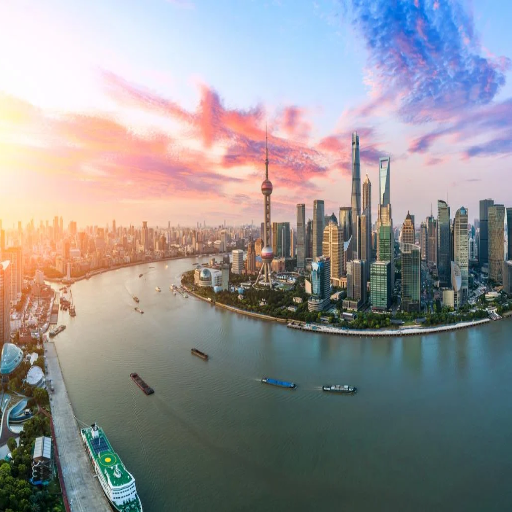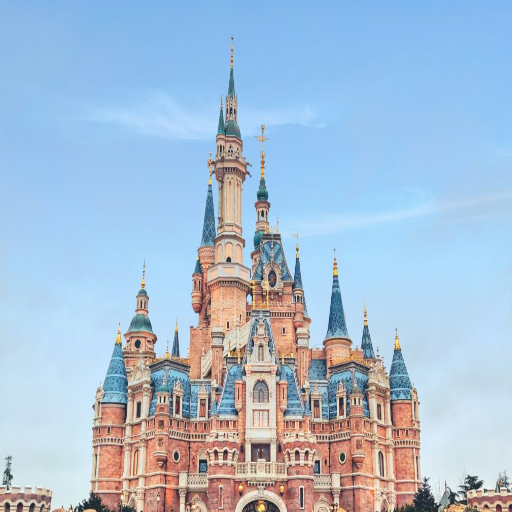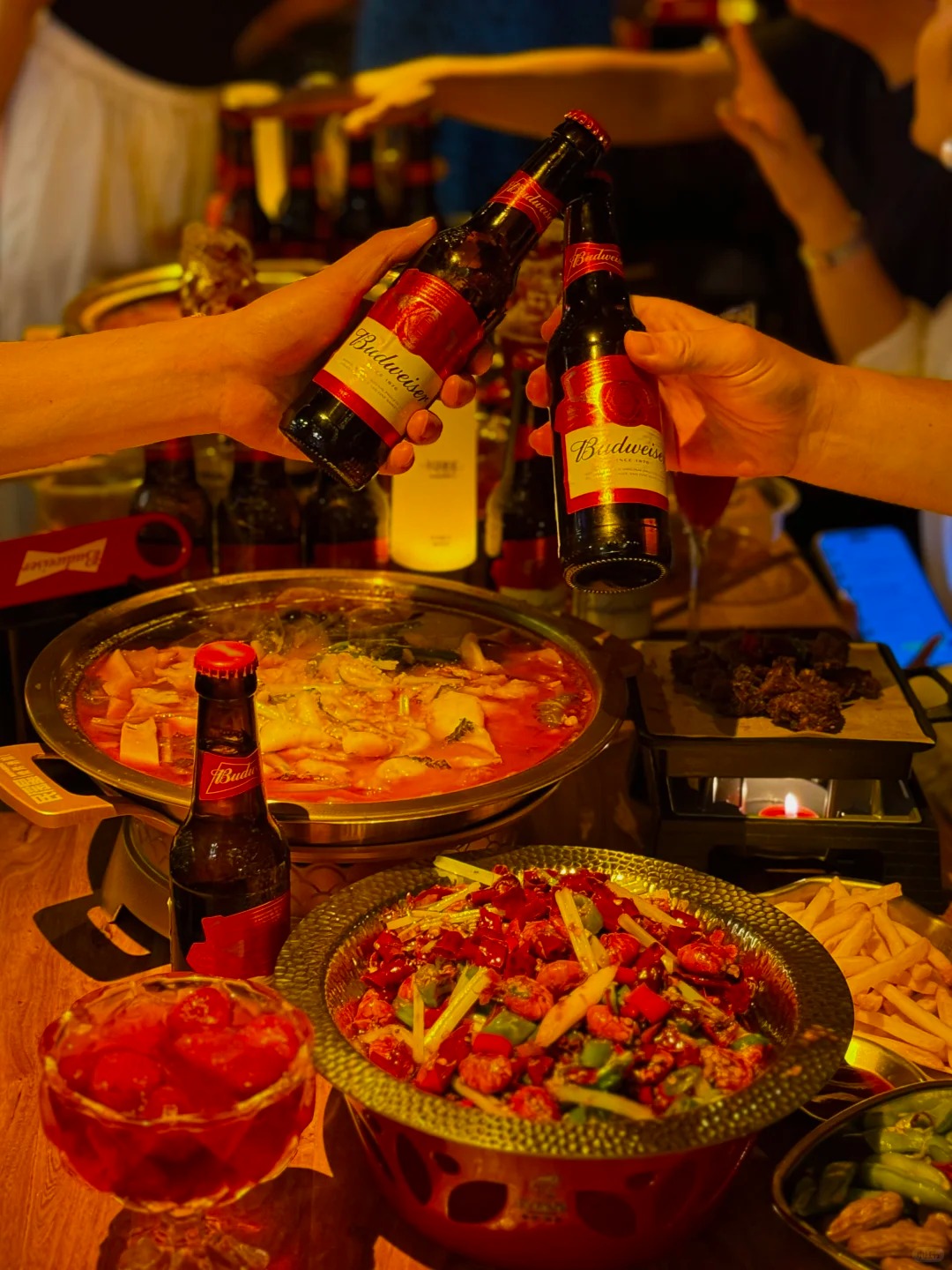The meeting of old traditions and innovations fuses perfectly in Shanghai. This wonderful city fuses its storied history with multi-cultural vibrancy and modern marvels. Tourists from every corner of the world flock to experience the astonishing skyline and the deluge of cultural landmarks the city offers. While it is also famous for its markets, Shanghai has unique places where an adventurer can satisfy their wanderlust. This guide will highlight the qualities that charm millions of tourists year-round and outline the sadly few places where nature and tranquility still reign in Shanghai. Prepare to be amazed; this city has everything!
What Makes Shanghai a Top Tourist Destination?

Exploring the Iconic Bund and Skyscraper Skyline
The Bund is a well-known promenade in Shanghai since it is built next to the Huangpu River. It offers a magnificent view of futuristic skyscrapers alongside deep-rooted, historic buildings. While one side showcases buildings of the early 20th century, examples of Colonial Gothic, Baroque, and Art Deco Architecture styles serve as reminders of Shanghai's rich and vibrant history of trade and cosmopolitan nature.
Finishing the view of the other side of the river, we encounter some of the most innovatively designed and tallest buildings in China. The sleek Shanghai Tower, at 632 meters, is the tallest building in China. It is located next to the equally famous Oriental Pearl Tower, which is noted for its spheres. The cityscape is also enriched by the golden Jin Mao Tower and the strikingly designed Shanghai World Financial Centre.
Seeing the view of the Huangpu River during the night brings yet another level of beauty as the lights of the city pulse and reflect magnificently on the river. Whether taking a river cruise or strolling along the Bund, this region captures Shanghai's attempt to marry its historic charm with modern ambition, showcasing it as a must-see for any incoming traveler.
How Shanghai's Rich History Attracts Foreign Tourists
The unique essence of Shanghai resonates deeply with foreign tourists due to its rich history, which tells the story of an ancient fishing village evolving into a modern economic powerhouse. Surrounded by a well-preserved historical district, the Yu Garden is an architectural marvel from the Ming Dynasty, showcasing the rich traditions of Chinese landscape artistry and architecture. While the courtyard is an absolute masterpiece, Yu Garden also features exquisite ponds, rockeries, and pavilions. The French Concession, another gem with European-style architecture, is home to colonial-era buildings and Europe-facing tree avenues, inviting culture lovers from far and wide.
Art enthusiasts and scholars from various parts of the world flock to the Shanghai Museum, which is home to vast collections of ancient artifacts, including but not limited to jade carvings and ceramics. These historical gems, combined with modern infrastructure, organized tourism, and maintained public spaces, provide a pleasant experience for all visitors. Shanghai is at the top of the list for global travelers seeking cultural and modern travel due to its ability to showcase ancient history and landmarks.
The Impact of Shanghai's Nightlife on Tourism
Centuries of history blended with modern influences make Shanghai one of the most amazing cities worldwide. Not only is it a town where businesses can be conducted for citizens of the world, but Shanghai also attracts tourists with its breathtaking sights and recreation opportunities. Chinese acrobatics, Peking opera, and multicultural themed bars offer sunset activities galore, and delightful Huangpu River cruises allow one to view the illuminated Lujiazui financial district, a sight to behold.
When the sun sets, all the things to do and see in Shanghai are taken up a notch. The town transforms into a bustling region, with iconic neighbourhoods such as The Bund and Xintiandi coming alive to blend tradition with modernity. Bustling night marketplaces rich with culture and rooftop bars overlooking the skyline showcase the “Shanghainese” way of life.
All the activities boost foreign investment, and in return, help locals economically. Thanks to the growing opportunities in the hospitality and service sectors, Shanghainese residents now have improved employment options. An outcome of all the perks in Shanghai is the astonishing nightlife, which makes the town a leader in events and festival tourism. Frequent international film festivals with lavish galas and spectacular light shows only add to the value. As one of the world's most modern and cosmopolitan cities, Shanghai has become an iconic location for global tourism, which is attributed to its well-structured nightlife system that can be easily accessed via public transport and is deeply rooted in local culture.
What Are the Must-See Attractions in Shanghai?

Visiting the Renowned Yu Garden and Other Many Scenic Spots
Yu Garden, or Yuyuan Garden as it is otherwise called, is a classic Chinese garden and a place of interest in Shanghai. Dating from the Ming Dynasty, this immense garden blends beautifully designed pavilions with calm water bodies and ornate rocks soothingly carved in the form of dolls. The structural systems embody the Chinese style with chiographing windows bounded with gentle waves blowing out of nature outside and harmony. One of the garden's highlights includes The Jade Rock, a porous stone said to be the finest.
In addition to Yu Garden, other places of interest within Shanghai capture one's attention. The Bund is particularly famous for its view at night when colonial buildings are aglow beside the Huangpu River, juxtaposed with modern skyscrapers. Zhujiajiao Water Town, known as the Venice of Shanghai, evokes more traditional Chinese culture with its picturesque canals. For nature lovers, Century Park boasts the title of the largest park in the city, serving as an oasis of greenery for relaxation and recreation. Collectively, these attractions reflect different aspects of Shanghai's history, culture, and modernization.
Experience the Cultural Melting Pot at the French Concession
One of the French Concessions is the historic district in Shanghai. Integrations of European cultures can be found alongside exquisite Chinese traditions, bringing about an unusual and dynamically blended culture. This area's highlight is tree-lined roads and colonial architecture, serving as the French expatriate enclave throughout the 20th century. The area is a blend of traditions and modern enhancements. Stylish art galleries and shikumen houses coexist, giving us fashion boutiques and vibrant cafes to enjoy.
The breathtaking example of the French Renissance architecture at the Wukang Mansion and Fuxing Park adds spice to the locals' tai qi and traditional music performances. Located alongside the French Concession, Tianzifang district received an upgrade with trendy shops serving Shanghai and international cuisine. This helps define Shanghai's identity, making it a core location for anyone who wishes to explore the confluence of city life and old period traditions through modern technology.
How the Shanghai Tower Became a Landmark
China is recognized for its fast-growing urban developments. One of its most significant architectural achievements is the Shanghai Tower. Towering at 632 meters, it is the second-tallest building in the world and stands as the symbol of urban evolution. Construction was completed in 2015, and Gensler Corporation, a well-known architectural firm, incorporated various engineering principles, such as wind load mitigation, which is accomplished using a unique twisted structure that reduces wind load by 24%. This innovative and sustainable approach makes The Shanghai Tower an engineering marvel. The tower features 128 floors: office spaces, retail centers, and merchandised observation decks.
The Shanghai Tower is the perfect example of an eco-friendly skyscraper. The building has been awarded a LEED Platinum certification, which means it meets eco-sustainability goals. In addition, the Shanghai Tower has a rainwater recycling system, wind turbines, and an improved thermal double-skin façade that insulates the structure to regulate temperature. Skyscrapers worldwide consider the Shanghai Tower a prime example of eco-friendly innovations.
Beyond an engineering masterpiece, the Shanghai Tower is a sociocultural and business center. Millions of tourists each year are drawn to the observation deck, one of the highest in the world, at 561 meters. Its prominence as a venue for international business and events and its observation deck mark Shanghai Tower as a contemporary icon that blends global and Chinese achievements.
How Can Tourists Easily Get Around Shanghai?

Navigating the City with Shanghai's Efficient Transit System
The highly developed transit system has made traveling around Shanghai easier. It is safe to say that tourists can enjoy their visit without getting lost, as the city's transport system is relatively easy to navigate. The Metro serves as the primary form of transport for city dwellers and tourists, as it has over 20 lines and is constantly being modified to accommodate users better. Tourists who visit the city will find it easy to adjust to using the metro, which has excellent visibility, is announced in multiple languages, and provides affordable prices. Other means of transport, like buses, taxis, and ride-hailing apps, make travel more accessible.
For shorter distances, tourists can have the Shared Bicycles placed around Shanghai for easy access. This green solution lets tourists take in the sights more relaxedly. Furthermore, people who wish to see the world-famous waterfront of Shanghai can use ferry services that operate all over the Huangpu River. Beyond transport, these ferries offer spectacular views of the skyline. The ferry services also integrate Metro cards, which are commonly used and accepted alongside other forms of public transport, further adding to the ease of navigation. Shanghai has such a dynamic and accessible system that guarantees effortless and enjoyable exploration of the vibrant streets and iconic sights.
Tips for Taking a Taxi in Shanghai
While there are many ways to get to know Shanghai, taking a taxi can be an efficient and enjoyable option, and several rules need consideration. To begin with, it’s better to choose reputable taxis that can be recognized by their company colors and signs on the cab doors. The most popular taxi colors are yellow, turquoise, and white, all from Dazhong or Jinjiang. Avoiding preset misunderstandings, always check that the meter has started at the beginning of your trip, since legally, cabs are obliged to use the meter.
Currently, most cabs accept cash for short-distance trips, although mobile payment options like Alipay, UnionPay, and WeChat Pay are now more common. In case the driver doesn’t have proper English skills, having the destination written in Chinese characters is sure to help. Along with being called off the road, taxis can be booked in advance using DiDi, an app that also estimates how much you will pay so that you can cover other transport timings. Sunshine and rush hours may result in a drop in yield, and these times should be avoided if alternative transportation is preferred.
Why Biking is a Popular Option for Tourists
The combination of ease of use, eco-friendliness, and the opportunity to engage with the surroundings has made biking a common transportation choice among tourists globally. Many tourist hotspots and cities have significantly improved their bike-friendly infrastructure, including dedicated bike lanes, bike paths of great scenic beauty, and bike-renting services. Unlike public transport, getting around by bike removes all restrictions, giving tremendous freedom to travelers willing to stop and savor the local sites and landscapes, which otherwise would be ignored. Travelling by bike helps eco-friendly tourists as it considerably shrinks carbon emissions, supporting the already existing sustainable tourism framework.
Moreover, biking’s appeal spreads further among eco-friendly travelers by adding health benefits sought by those with an active lifestyle. Along with the cardio bike, which helps promote mental faculties, gliding through beautiful vistas is refreshing and soothing. Many tourist spots, including Amsterdam, Copenhagen, and Kyoto, have embraced the bicycle culture, turning it into a thriving culture in the district. Further, the development of e-bikes and bike sharing systems has improved biking accessibility for individuals of different fitness levels, making it easier for the public to enjoy one of the most sustainable and affordable modes of transport.
For some, cycling strengthens the bond with the local area. Riding a bike allows one to see the city or countryside up close instead of being hundreds of feet above in a car, train, or plane. Tourists can interact with the unique culture and life of the locals while using their bikes. From driving through lively market areas to taking a break at local coffee shops, there is always something new to experience. Whether people ride in cities or have their bikes in the countryside, biking offers physical activity and self-reflection, which makes travel unforgettable and dynamic.
What Accommodation Options Are Available for Tourists in Shanghai?

Choosing the Right Hotel for Your Stay in Shanghai
Shanghai has quite a wide range of hotels and places to stay that suit different needs, preferences, styles of travel, and budgets. If you are a business traveler, family on vacation, or just looking for a great deal, this city has something to offer everyone. Tourists looking for a more luxurious experience can spend their nights at five-star hotels like The Peninsula Shanghai or the Waldorf Astoria. These hotels provide exquisite river views, sumptuous dining, and unforgettable experiences to elevate an extravagant stay.
Business tourists are also catered for, as the Jing An Shangri-La, located in the heart of the Jing'an business district, boasts easy access to all commercial outlets. Shikumen boutique lane houses are also available for tourists who want a more diverse cultural touch to their hotel in Shanghai. The Capella offers immersive local history while blending modern luxuries.
Budget-savvy tourists might pick up mid-range or economy hotels like The Campanile or Ibis Styles, which provide clean and comfortable lodging at reasonable prices and are frequently close to public transportation. One of the most popular and economical options for solo travelers or groups is hostels in Shanghai, since the city has a growing selection of hotels. Such spaces are often positioned in central locations, making them more appealing as they can interact with other guests.
While choosing your accommodation, consider the distance to the places of interest, central access to public transport, and the general feel of the area you want to stay in, such as the French Concession’s historic charm, Lujiazui’s futuristic skyscrapers, or Tianzifang’s artistic spirit. With all the travel-tailored options available, visitors can be certain that Shanghai is bound to provide unforgettable experiences.
Exploring Expats and Short-Term Rentals in the City
Shanghai remains popular among expats and offers diverse selections of short-term rentals in terms of accommodation and services for business travelers and tourists. Expats’ preferred regions, such as Jing’an, Xuhui, and Hongqiao, are famous for their international schools, coworking spaces, and international restaurants. Among the preferred accommodation types are modern serviced apartments, which offer expats fully furnished units with additional housekeeping, fitness centers, and concierge services. Such rentals are usually delivered on flexible lease agreements best suited for short-term stays.
Locals willing to provide tailored experiences also offer private apartments and shared accommodation. Specialized websites offer a wide range of studio flats and large multi-bedroom apartments. The price of each unit differs based on the location, size, and additional furnished amenities, with higher rates close to the city centers and central business districts. However, regardless of one’s accommodation preferences, Shanghai’s extensive rental market grants all visitors and expats access to tailored services and living situations.
Why Do Foreign Tourists Prefer to Visit Shanghai Over Other Cities in China?

The Role of Shanghai's Cultural Diversity in Tourism
Shanghai attracts foreign tourists like me far more than any other city in China, owing to its remarkable cultural diversity. Regional and international influence, or the East and the West, coexist or blend together in its architecture, restaurants, and lifestyle. Shanghainese people showcase ancient temples, colonial buildings, and modern skyscrapers, highlighting the city’s rich history and culture. This entire blend is very beautiful and totally unique to every voyager.
Shanghai’s culinary diversity also exemplifies its richly multicultural culture. From authentic Shanghainese meals like xiaolongbao to numerous international cuisines offered in high-class restaurants, I can proudly say that dining in Shanghai is jaw-dropping. Its ever-growing population and restaurant options provide visitors a taste of almost every nation worldwide. Along with Hoover shopping and cultural areas like the Bund and Tianzifang, Shanghai is a global hub.
Perhaps the most impactful factor is the city’s welcoming feel because of its infrastructure and interconnectedness with the world. The presence of English speakers, an organized transport system, and abundant expatriates makes Shanghai easy for foreigners to navigate. In the end, Shanghai’s unique amalgamation of cultural depth, modern facilities, and international appeal makes it stand out as the primary attraction for people wishing to visit the central part of China.
How Shanghai Compares to Beijing and Hong Kong
The unique Shanghai is a cosmopolitan center with a strikingly diverse outlook, integrating old and new Shanghai. The juxtaposition of futuristic skyscrapers with old architectural wonders such as The Bund and Yuyuan Garden demonstrates Shanghai's balance of modernity and tradition. Contrary to commercial and business-oriented Shanghai, Beijing is a historical and politically charged city with the iconic Forbidden City and Great Wall as its centerpieces. Beijing transports you into China’s royal history and the political center of its power. At the same time, Shanghai seems to have awakened as a booming economy with all the energy and innovation around.
On the other hand, Hong Kong seems captivating with its mix of Chinese culture and British colonial influence. It features an ethnically diverse, fast-paced, vertically constructed city surrounded by greenery and open seas. While Shanghai and Hong Kong are both international cities, Shanghai's cultural identity, which stems from Chinese roots, is more pronounced than Hong Kong's. Unlike the rest of China, Hong Kong resonates with a sense of autonomy, as it has legal, political, and economic systems. Meanwhile, Shanghai has something no one else offers: a glimpse into modernized China with clear ties to its history.
With these factors in mind, Shanghai is unique because it does not have a counterpart between Beijing and Hong Kong. That's because Shanghai offers the unparalleled tapestry of sophistication and harmony of the outside world. As a traveler, I am drawn to Shanghai because it represents modernized China at the forefront of the future while still deeply connecting to its past.
The Benefits of Visiting Shanghai for International Tourists
International tourists coming to Shanghai make visiting Shanghai a unique experience as it skillfully combines cultural experiences with modernity. To me, what was most impressive was how the city offered something to cater to all tastes. From a historical perspective, there is the colonial architecture of Yu Garden along the Bund. For contemporary marvels, the stunning skyline of Lujiazui has the emblematic Oriental Pearl Tower and Shanghai Tower. While walking in the city, I imagined being suspended between two equally enchanting periods.
Another significant advantage is the tourist friendliness of Shanghai for people from all over the world. The city opens its doors to travelers with its effective public transport system and numerous dining options. I was struck by the many international restaurants next to local ones. From trying out xiaolongbao at a famous noodle shop to eating at Michelin-starred restaurants, the culinary options were amazing. Considering that English is used for signage in the metro and other essential tourist locations, it is clear that Shanghai is intended for international tourists.
Probably the most important thing to do in Shanghai is to appreciate how its traditions blend with modern-day innovations. The city was full of life as high-tech developments blended with longstanding traditions. Cultural festivals are celebrated with as much vigor as astonishing technological advances. For me, Shanghai is not only a representation of the country's development but an invitation to explore China’s advancements right from the source.
Frequently Asked Questions (FAQs)
Q: What draws tourists to Shanghai?
A: Shanghai's status as a megacity within China draws tourists. It is one of China's largest and most beautiful cities, offering both modern and historical places. Moreover, its streets are filled with people, and its unique culture and contemporary lifestyle are vibrant. Inbound tourism significantly contributes to the industry, with millions of tourists annually.
Q: What sites can you visit in Shanghai?
A: Visitors appreciate the Yu Gardens and the Oriental Pearl Tower, in addition to the Shanghai Museum. Other significant features include the Bund, Nanjing Road, the Shanghai Museum, and last but not least, the Shanghai Tower, with its skyscrapers boasting an astounding obsession with unique art.
Q: Is communication easy with foreigners visiting Shanghai?
A: Tourists can now visit Shanghai without worrying too much about how they will navigate, owing to the convenience of its central tourist attractions. In addition, Shanghai’s public transportation, like the metro, is relatively fast and straightforward.
Q: Do people from abroad need much paperwork to enter Shanghai?
A: Most travelers must undergo paperwork, such as obtaining a visa, when entering China, Shanghai. However, checkups on rule structures are always subject to change, as there are some rules, like visa-free short stays. However, Chinese officers need to be knowledgeable about current policies.
Q: What is the best time of year to visit Shanghai?
A: The best periods to visit are spring (March to May) and fall (September to November), as temperatures are milder. Inbound tourism tends to spike during these times due to cultural and artistic festivals.
Q: Why is Shanghai significant in terms of the Chinese economy?
A: Shanghai remains one of the largest metropolitan areas, making it one of China's largest international financial centers. It is heavily integrated into the economy and generates substantial value added to the GDP. It is a primary source of ideas, innovation, entrepreneurial activity, and trade.
Q: What is the cultural significance of soup dumplings in Shanghai?
A: Known as xiaolongbao, soup dumplings are a popular local dish. They are a must-try delicacy, a symbol of the culinary arts and the ever-evolving food history of Shanghai, and attract tourists from all regions of China and the globe.
Q: How does Shanghai compare to other Chinese cities like Beijing or Hong Kong?
A: Unlike Hong Kong or Beijing, Shanghai has a unique combination of eastern and western influences, making it more cosmopolitan. All cities have exceptional features, but none offers the blend of modern and ancient as Shanghai.
Q: Which position does Shanghai hold in the tourism sector?
A: Like other parts of China, Shanghai is a crucial center for receiving inbound tourism. People from different geographical regions across the globe visit for tourism purposes. With an ever-increasing number of travelers visiting Shanghai annually, the city never ceases to capture global tourists with its all-in-one offerings, including nightlife, shopping, and amazing places to visit.
Q: Are there notable day trips one can take from Shanghai?
A: There are easily accessible and breathtaking day trips to explore other areas, beginning with Shanghai. The most popular attractions include the classical gardens of Suzhou and West Lake in Hangzhou. The two places provide an excellent combination of easy transportation and immeasurable value for exploring traditional Chinese culture.


